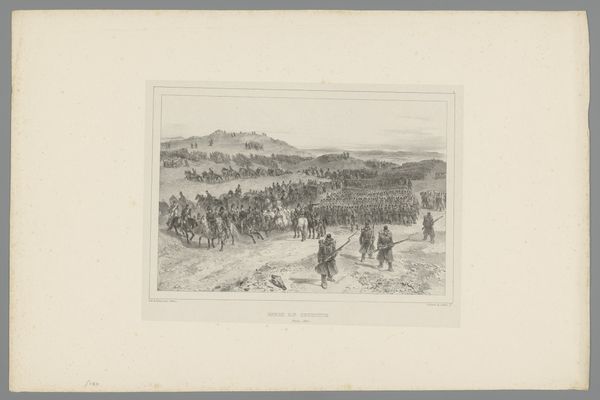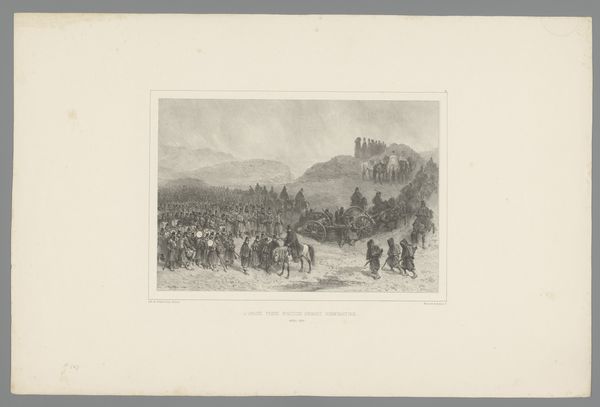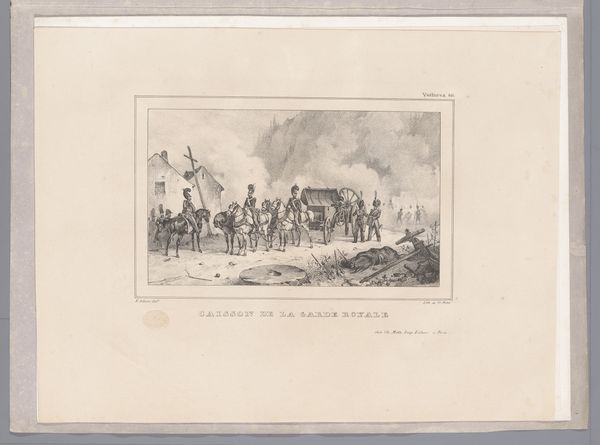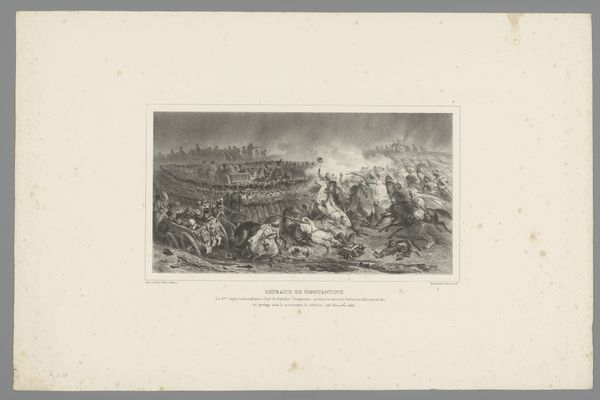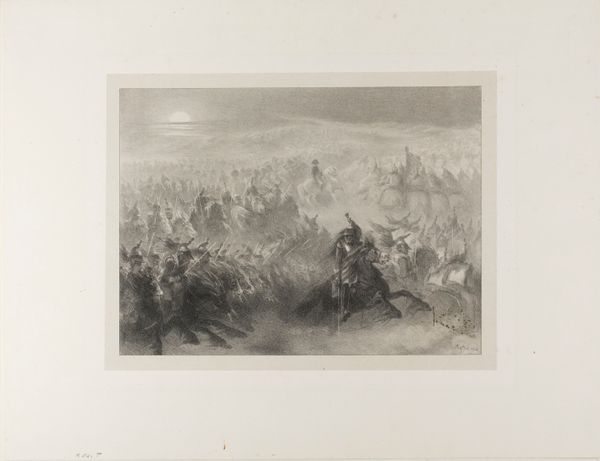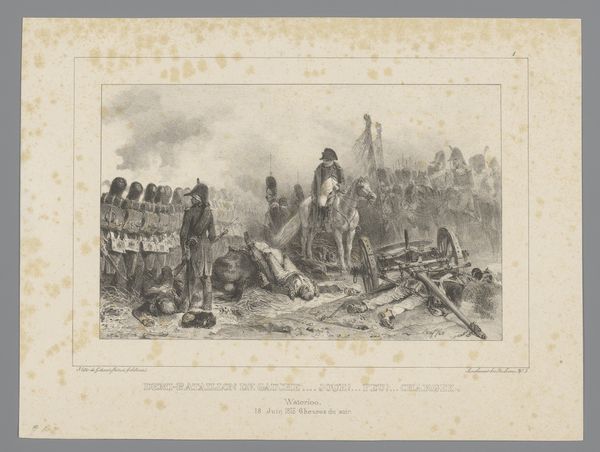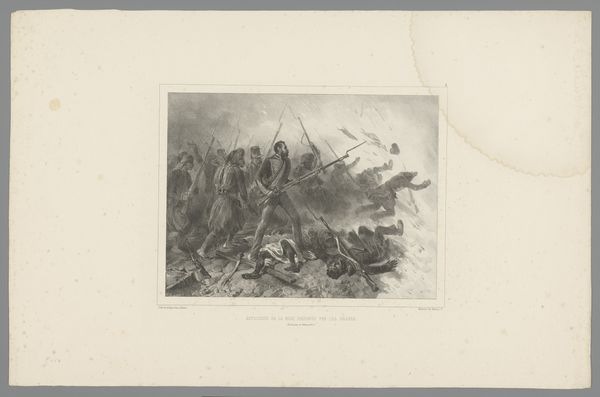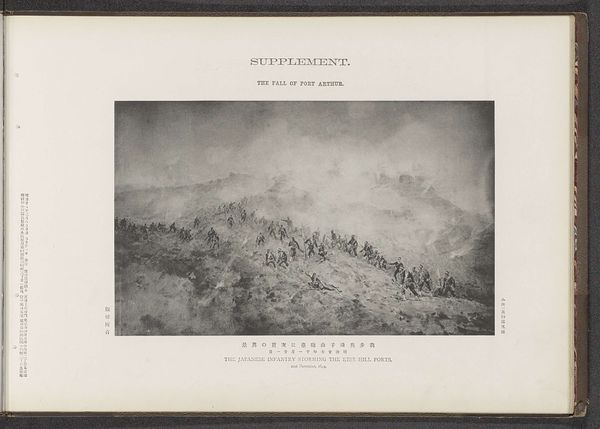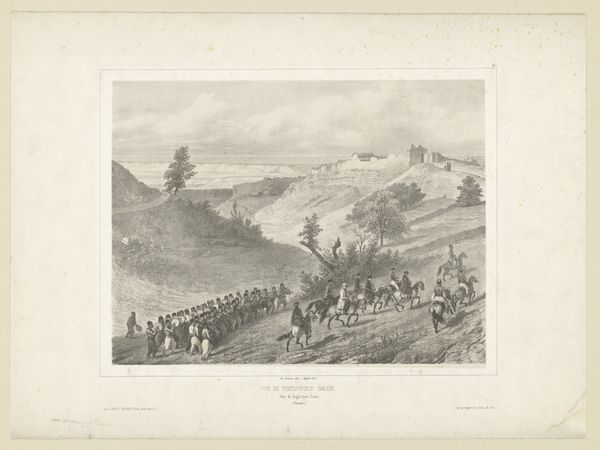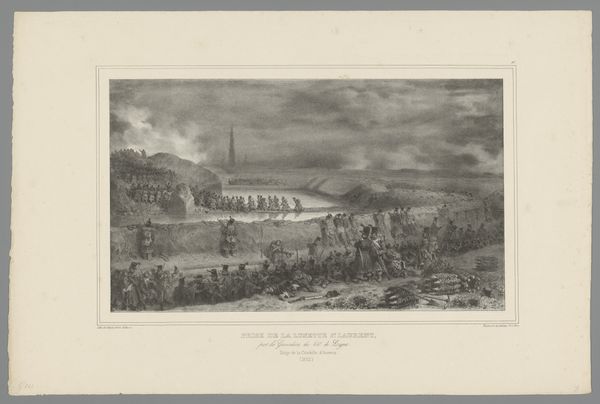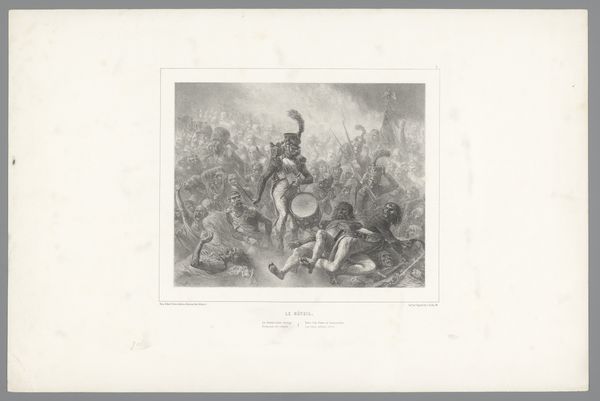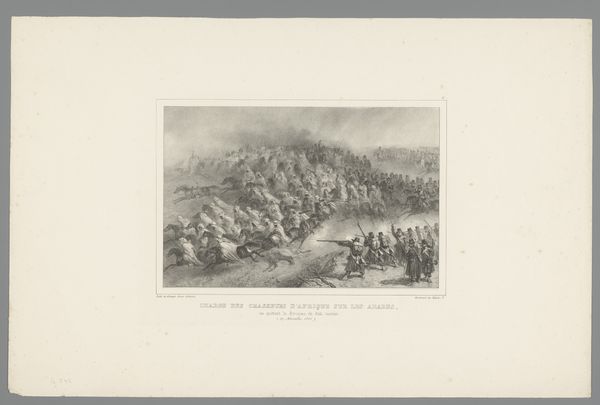
drawing, lithograph, print
#
drawing
#
lithograph
# print
#
landscape
#
figuration
#
romanticism
#
history-painting
Dimensions: height 365 mm, width 547 mm
Copyright: Rijks Museum: Open Domain
Curator: Auguste Raffet created this compelling lithograph in 1837, titled "Franse leger vertrekt uit Constantine, 20 november 1836," depicting the French army leaving Constantine. It’s quite evocative. What’s your initial response? Editor: Despair. It’s bleak, isn’t it? The grey, almost monochromatic palette, the fallen horse... It conveys a profound sense of defeat and suffering. Curator: Absolutely. The image resonates with Romantic ideals. Raffet, using lithography, a medium allowing for the quick reproduction and wide distribution of images, made sure it reached a broad public. The historical context is key: the French army's withdrawal from Constantine in Algeria. We can discuss how this piece engaged with prevailing attitudes toward colonialism and the depiction of war in art. Editor: Indeed. Look at the fallen horse—a potent symbol of powerlessness and the futility of conflict, wouldn’t you say? It contrasts sharply with the regimented lines of soldiers still standing, emphasizing the devastating toll of war on man and beast. The horse as a traditional symbol of virility undone. Curator: I see your point. The mass production of such imagery is interesting to consider from a production point of view, as these pieces would find their ways into homes of everyday people, influencing and possibly galvanizing different sectors of the French population, who might consume it, for instance, and use it for social mobilization. How does this imagery bolster the idea of national pride and destiny or does it undermine it by suggesting the high cost of colonization? Editor: Well, beyond any patriotic intent, you cannot miss the sheer drama of the image and how Raffet renders the army like some sort of human snake slithering across the battlefield, its emotional weight amplified through the careful rendering of detail but it doesn't obscure its place within the context of romanticism as the French people reckoned with themselves at that point in history. Curator: And within lithography, a print medium, its inherent accessibility and replicability gave more power to the symbolic function of each subject portrayed and its resonance across a culture facing internal reckoning, that's undeniable. It's a fascinating blend of Romantic idealism, practical considerations, and mass media's budding power. Editor: Definitely something to continue to contemplate as we move forward. It's an image that lingers, prompting reflections on historical events.
Comments
No comments
Be the first to comment and join the conversation on the ultimate creative platform.
